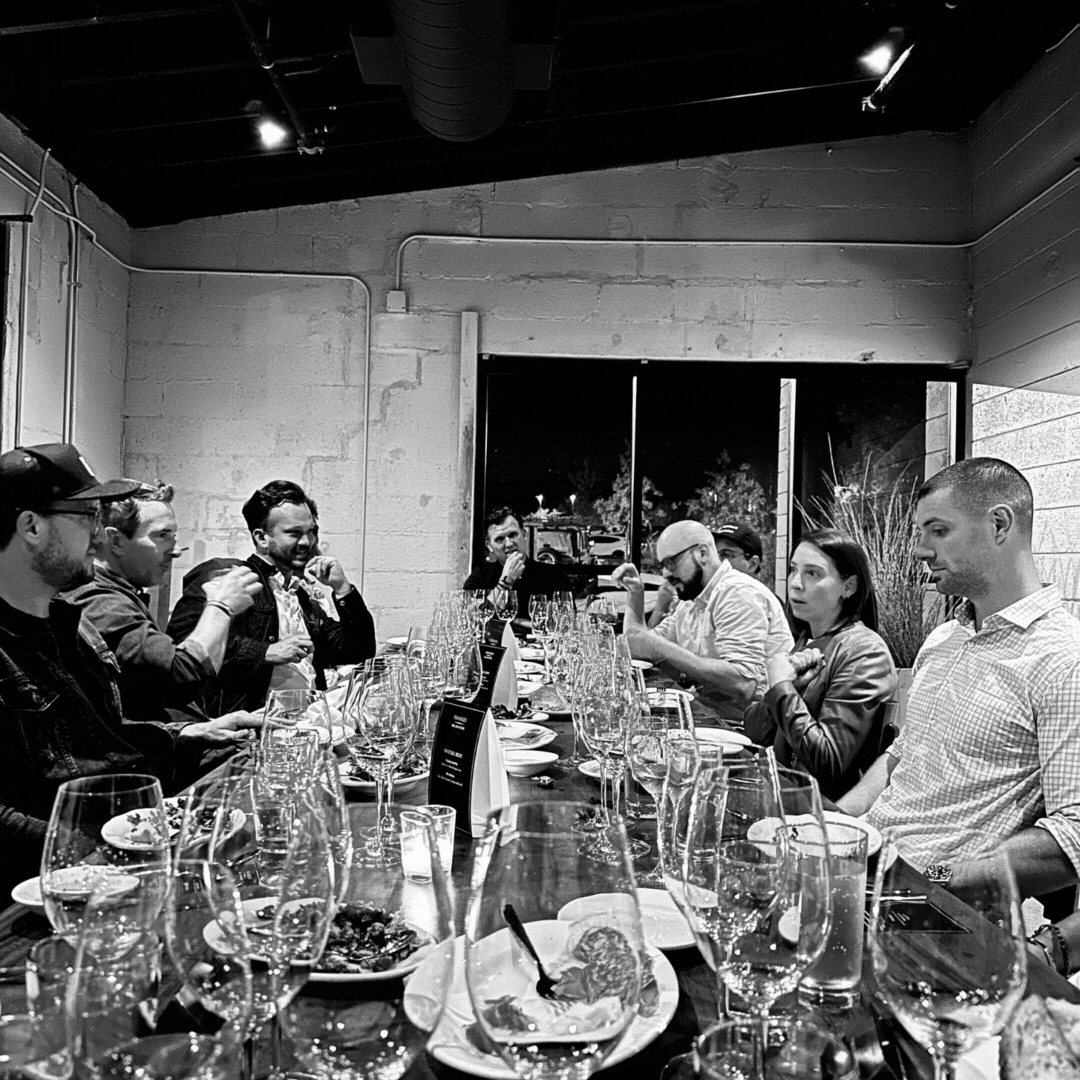


In the closing days of October, ON_Discourse assembled in Music City around our recent ON_Sport release: The Fan Experience Issue. Let’s recap…
Under the starry skies of Nashville, a small group of founders, partners, entrepreneurs, former athletes, and ON_Discourse members broke bread paired perfectly with wine, and debated the future of the sports industry and the fan experience.
I want to provoke people into discourse and let their conversation work it out.”
ON_Discourse co-founders Dan Gardner and Toby Daniels served as the night’s primary provocateurs. This event was designed to be different; their plan was to provoke more and talk less. In the moments before dinner, Gardner told me how he spent the previous week preparing for every conceivable angle of our provocations. “I want to make sure we’re not just being interesting at the table; we need to push the concepts to the brink of disagreement. I want to provoke people into discourse and let their conversation work it out.”
Mission accomplished. Toby afterwards relayed the feeling at the table, telling me “we barely had to talk. People came to the table ready to get into it and then that’s exactly what they did.” While happy to hear this news, I was curious; did something happen in this event that elevated the discourse to this level? Toby went on to explain how it all worked: “while the members and guests were sipping wine we posed a warm-up question that got their discourse gears turning. All this happened before we introduced our first technical provocation.” I pressed further until Toby shared the key warm-up question that set it all off:
IF YOU HAD $100M,
WHERE WOULD YOU INVEST IT FOR THE BEST 10 YEAR RETURN?
Remember that this question had a few parameters that guests were told to keep. The money had to be invested somewhere in the world of professional sports. It could go into an ownership stake in an incumbent league, like an NFL franchise, or it could go into a number of breakout insurgent leagues that are capturing market share in the ever-changing landscape of professional sports. We learned a lot about these insurgent leagues in this issue: Topgolf for Tennis, Fan Controlled Football, and we also reported on a lot of innovative successful acts that other leagues like F1 and the LIV Tour. A variety of perspectives were processed in the first few minutes of this session. We can even report that one of our guests' perspectives fully changed by the end of the night. That is true discourse!
Key takeaways, quotes, and moments:
Who has a better deal on F1? Netflix or ESPN?
- The sustained success of F1’s Netflix hit “Drive to Survive” became the proxy for media rights bubble perspective. The discussion on this issue involved a real-time breakdown of the economics of media rights vs dramatic documentary footage.
- Netflix spends between $40 - $60M per year for access to produce Drive to Survive.
- ESPN spends $500M per year for live media rights of the races
- Netflix averages ~ 600K views per episode
- ESPN averages ~ 1.2M viewers per race
People don’t care about teams anymore. They care about influencers.
Who has a better deal on F1? Netflix or ESPN?
- The sustained success of F1’s Netflix hit “Drive to Survive” became the proxy for media rights bubble perspective. The discussion on this issue involved a real-time breakdown of the economics of media rights vs dramatic documentary footage.
- Netflix spends between $40 - $60M per year for access to produce Drive to Survive.
- ESPN spends $500M per year for live media rights of the races
- Netflix averages ~ 600K views per episode
- ESPN averages ~ 1.2M viewers per race
Would Dennis Rodman be the highest-paid athlete in the NBA today? The Kardashian effect meets the court…
- The conversation about the future of fans turned into economic incentives for leagues and franchises. In this scenario, the league has a clear incentive to capitalize on the halo effect of enhanced social media attention. Will this incentive drive contract deals and other player incentives - shifting priorities away from abilities and success on the field and more towards engagement in the feeds?
How do you react to the takeaways from the event?
What have you been thinking about in this issue?
Let us know and join the discourse.
Reach out to me at chmiel@ondiscourse.com and we can keep the discourse flowing.

